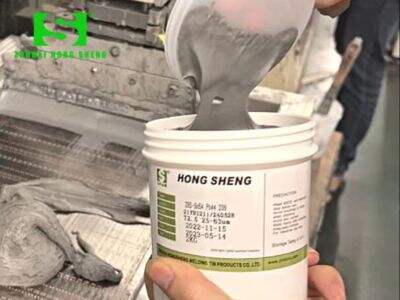Solder paste is a indispensable material in the production of electronics. One important way in which it does so is by facilitating establishing links between various subsections within the electronics on a dedicated called board as a printed circuit board also abbreviated PCB). This text will hopefully help you with the basics of solder paste, where it comes from, why it matters and how it is used in electronic assembly.
What Is Solder Paste?
Solder paste by Hong Sheng is comprised of microscopic metal balls, a sticky goo called flux, and a glue-like binder that keeps it all together. These metal particles in the paste are typically composed of tin and lead, but there are also so-called lead-free solder more pastes environmentally friendly since they do not contain any lead. The flux is very crucial as it acts as a cleaner for the metal surfaces, removing any dust, or oxidation to allow better bonding of the metals. The main ingredient in solder paste that provides it with its viscous, paste-like nature — the binder allows an even and simple spreading of the solder onto the PCB.
The Importance of Picking The Correct Solder Paste
Picking of excellent solderguarden.com ensures the viability of electronics being built. All soldering pastes are not created equal, and the type of solder paste you use will depend on the project at hand as well as the components that you need to attach to one another. Consider Part Details, Finish On The PCB And Assembly Process When Choosing Solder Paste If wrong type of solder paste for smd is used, this can lead to poor connection which may cause electronic device to malfunction or fail. Hence it is important to be careful in selecting the correct solder paste for assembly.
Solder Paste Characteristics to Take into Consideration
In this article we discuss some salient features of the solder paste that you must know. These factors can include the metal particle size, flux performance and the amount of metal in the paste. The size of the metal particles is crucial as this determines how well the solder paste flows and how much of it is applied to the PCB. If they are too big, it may not spread properly. The flux activity is also important to enable a better adhesion of the solder to clean surface. Last thing to keep in mind is that the more metal in a silver solder paste, the hotter it will get when heated and harder it will bond the connection after you soldered. Knowing these Advantages well helps alot in getting high quality output.
How to Use Solder Paste
There are many methods to laying solder paste on PCB and every method has its own pro's. One of the most common ways is stencil printing, which involves using a stencil to deposit paste uniformly on the PCB. It is the preferred technique as it allows you to accurately control how much paste should be used at a time. In jet printing the paste is applied directly to the components by a machine. This can also be more efficient to reproduce for mass production There is also something known as dispensing, this a process where the paste is applied with syringe on to locations. Solder paste needs to be taken care of very seriously as if it is not stored correctly or kept out on a squeegee for too long, the solder paste will dry out and this can lead to issues in assembly process.
Common Soldering Issues and How to Correct Them
Solder Paste: Issues With Soldering Common problems include not enough solder, too much solder, or making unexpected connections between components by producing a non-intended conduction passage. If the Paster does not get hot enough for it to melt correctly, this results in Not enough solder. Conversely applying too much paste or overheating the paste during the process will use excess solder. This can result in a connection where one should not be, known as solder bridging. The good news is that it's possible to address these issues by changing the amount of paste you apply, the temperature setting on your reflow oven or using a different design of stencil.
 EN
EN
 AR
AR
 FR
FR
 DE
DE
 RU
RU
 VI
VI
 TH
TH
 TR
TR
 MS
MS
 BE
BE


